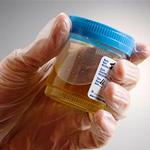analyzes
 Urinalysis according to Addis-Kakovsky
Urinalysis according to Addis-Kakovsky

When diagnosing pathological processes in the kidneys, an Addis-Kakovsky urinalysis is performed, which makes it possible to determine the quantitative content of formed elements in the urine (erythrocytes, leukocytes, cylinders). This research method is currently used quite rarely, however, the nurse must know the purpose of the analysis and the algorithm for the collection procedure.
Otherwise, this analysis is called a urine test using the Kakovsky-Addis method, because. it was first proposed by our compatriot, doctor, scientist and teacher Anton Fomich Kakovsky in 1910. The urine collected from the patient for 8 hours during a night's sleep was studied. In 1925, the American scientist and physician Thomas Addis recommended that the Kakovsky method be improved. At the same time, urine was collected by patients per day.
 Collection of urine according to Zimnitsky
Collection of urine according to Zimnitsky

To study the excretory and concentration ability of the kidneys, a Zimnitsky test is performed. Such a diagnostic procedure is prescribed for patients with kidney pathology, as well as for diseases of the cardiovascular system (IHD, hypertension) and the endocrine system (diabetes mellitus). Proper collection of urine according to Zimnitsky ensures the reliability of the result of the study. The main task of the nurse is to educate the patient in the preparation and conduct of urine collection for analysis.
 Urinalysis according to Nechiporenko
Urinalysis according to Nechiporenko

If it is necessary to quantify erythrocytes, leukocytes, cylinders (shaped elements) in the urine, a urine test according to Nechiporenko is performed. It is prescribed by a doctor when an increased number of leukocytes is detected in the general blood test , in the general analysis of urine - cylinders, and in other cases.
To obtain a reliable analysis result, the patient should be taught the preparation and direct collection of urine. The equipment for this procedure is a clean, dry jar or a plastic container with a hermetically sealed lid and a referral for research filled out in the prescribed form.
 Clinical blood test
Clinical blood test
Most often in medical practice, a clinical blood test for diagnostic purposes. A general clinical blood test includes a qualitative and quantitative study of blood cells, which include:
- erythrocytes;
- platelets;
- leukocytes;
- amount of hemoglobin;
- erythrocyte sedimentation rate (ESR).
Changes in the cellular composition indicate the presence of pathological processes in the human body.
 Collection of urine for general analysis
Collection of urine for general analysis

How urine is collected for general analysis and other studies, the nurse must know perfectly. Urine for general analysis is sent to study the functioning of the kidneys and other internal organs.
The analysis itself includes an assessment of the physicochemical characteristics of the studied biological fluid (urine), as well as a microscopic examination of the sediment.